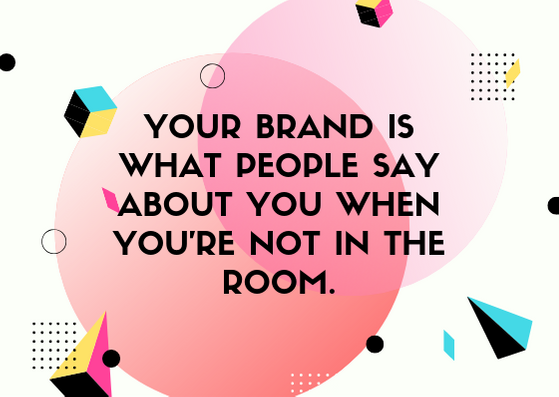Should you be customer-centric or brand-centric for greater success?

Imagine being in a group of people. Who will you be more inclined to have a conversation with – Jack Smith who is only talking about himself or Chloe Barnes who is interacting with other people, patiently listening to what they say and responding in a genuine manner?
Chances are you will be more inclined to have a conversation with Chloe. And for a simple reason—you want to make your side of the story heard while listening to others’ perspective.
This is exactly what happens in a marketplace. Some brands get so caught up in themselves that they forget to have a conversation with their customers.
What does it mean to be brand-centric?
Simply put, being brand-centric is a tone-deaf approach to marketing. The brand tells the customer what it wants them to know. This is exactly how marketing was done back in the day. That was the age of outbound marketing mindset. The marketer would come up with a message they wanted to communicate. They would then show the message to the customer through advertisements on TV, radio, newspapers, etc.
There was limited dialogue then. The mostly one-way communication determined what the brand wanted to say and when.
What does it mean to be customer-centric?
With the dawn of social media and search engines, customers have taken the command. Now when they have a need, they proactively go and search for more information on it or ask their peers on social platforms. Customers today are doing their own research and have developed multiple new skills, one of them being ‘ad blindness’.
What this means is customers have turned a blind eye to anything that doesn’t affect their needs and desires directly. Which is why brand-centric marketing has become so frustrating. As a brand, you can talk about your features all day long but all that talking won’t convert into ROI until your customers are emotionally driven to consider your product/service.
Today, before brands talk about themselves, they first try to gain the attention of their customers. By delivering valuable content, brands are working towards building long-term relationships with their customers.
Why are brands preferring customer-centric over brand-centric marketing?
When it comes to marketing, there are two things you must know:
- People’s trust in brands is at an all-time low
- Brand content has limited organic reach on social media
Your brand is what people say about you when you’re not in the room. Therefore, the power lies in your customers’ hand to make or break the reputation of your brand using social media and other digital forums. Your brand is a function of their expressed emotions.
Being customer centric has a huge business value. When you step outside your business bubble, you’ll notice that your customers will tell you what their pain points are and how they want it addressed. The questions that keep you up all night can all be solved if you shift your focus from being brand-centric to being customer-centric.
To build a customer-centric culture, entrepreneurs must take these three actions:
1. Ask for feedback
This seems confusing to most new entrepreneurs who are still in the initial phases of their business and marketing. Fret not if you are unclear on how to go about asking for feedback when you don’t have a good social media following or a large email database. Here’s how you can go about it:
- Create a simple Google form that does not take more than three minutes to complete. Make a list of all the email ids you have and send a personalized email to them requesting to share their feedback using the form. This will work a lot better if you can give them an incentive such as a discount or a gift card for filling the form.
- Create a landing page where you list down the important questions that you need answers to, to take your business forward. Advertise this landing page using social media posts that you can advertise for a small amount and target to the audience most relevant to you.
One factor that might add more flavor to your social media posts and encourage more clicks is the short link that you use for the landing page. Instead of going for a generic short link (such as bit.ly), choose a custom branded link such as businessname.space/your-feedback. New domain extensions such as .TECH, .ONLINE, .SITE, .STORE, .PRESS, .SPACE etc. add zest to any generic message inducing curiosity while communicating credibility.
2. Kill it with content marketing
The novel customer knows what their problem is and how to look for its solutions. They don’t appreciate being dictated. As an entrepreneur and a marketer, you must do your due research to find questions that are either not yet answered or that can be answered with your own unique twist. There are two things you need to do:
- Firstly, you need to craft content that is relevant and one that delivers value. Plain words on a paper won’t affect your ROI as much as words that come from a place of genuine care, will. When drafting an article, write for a friend you care about.
- Secondly, you must have a crystal-clear understanding of who your buyer is. When you know who you are talking to, you offer true value and lead the conversation instead of following it.
3. Make your customer service the best
To be customer-centric you need to be customer-friendly. One of the first functions that you must develop along with developing your product is your customer service. You must have the system in place that allows you to have a single customer view so that you have the specific details of your customer when they reach out to you.
Here are a few things to get right:
- Be attentive and respond quickly. If you don’t have the answer at the moment, let them know that you will get back to them with a definite answer in X amount of time. This simple act will make them trust you.
- Use social listening to find potential customers who are talking about a problem that your products/service solves. Give them a good service before they even become your customer. Doing this will give them the confidence to do business with you.
- Create an email id (e.g. support@businessname.online) and mention it in every email that you send out. Your customers should know where they can write to you in case of any concerns.
Conclusion
Your customers make your brand. So, it makes sense to put them first. However, as a brand, you must also have your brand specifics such as tone and personality clear from the first day. Your marketing approach should be customer-centric, but your messaging should be laced with brand-centric characteristics. That will help you differentiate yourself from other brands while building long-lasting relationships with your customers.
 This is a guest article by Alisha Shibli
This is a guest article by Alisha Shibli
Alisha is a Content Marketing Specialist at Radix, the registry behind some of the most successful new domain extensions, including .STORE and .TECH. You can connect with her on LinkedIn.

Recent Comments